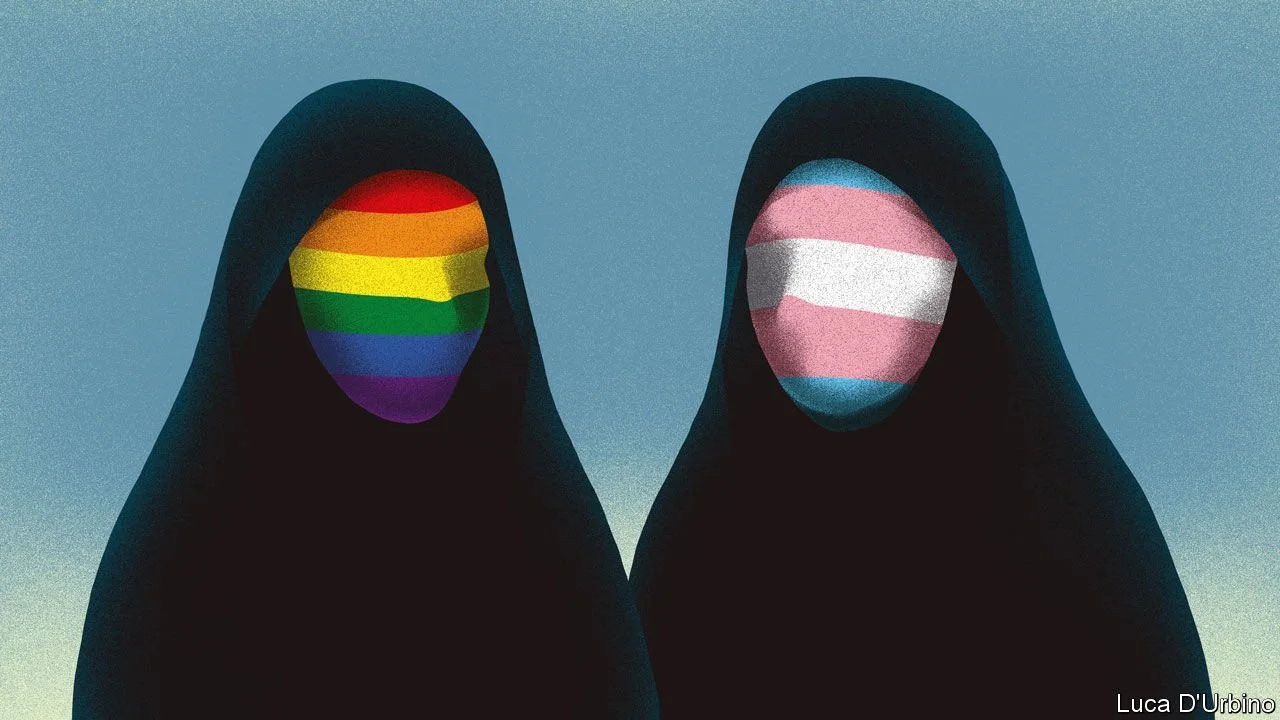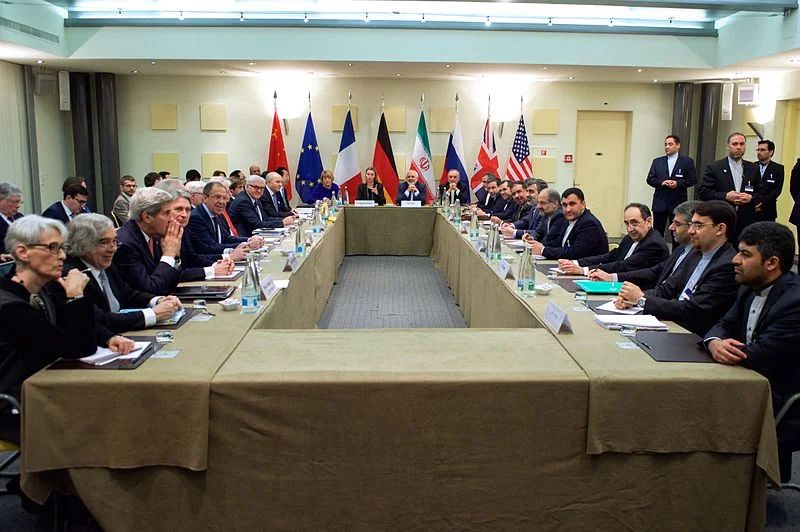About Iran: Myth vs. Fact
By AIC Research Associate Nika Mobed
MYTH: Iran is an ostracized nation whose economy and diplomatic relations have little direct impact on the lives of people living in the United States.
FACT: Strained relations with Iran do impact the lives of everyday Americans by virtue of lost business opportunities, increased oil prices, and diminished economic and geopolitical power. Increased engagement with Iran could unlock a surprisingly wide range of economic opportunities for people in the West.
By AIC Research Associate Tristan Gutbezahl
MYTH: Iran’s technology sector is primarily focused on military capabilities, especially drones, ballistic missiles, cyber weapons, and nuclear warheads.
FACT: Iran has a thriving civilian technology sector that has made considerable progress in the fields of biotechnology, nanotechnology, renewable energy, and artificial intelligence. The country is also home to a dynamic startup ecosystem.
By: Research Associate Tony Liu
MYTH: Especially since the Islamic Revolution in 1979, Iran is only a place people seek to flee, and is not seen by refugees or migrants from other countries as a viable destination.
FACT: Iran has indeed been a significant source country for refugees. However, according to the United Nations High Commissioner for Refugees (UNHCR), Iran is also “host to one of the largest and most protracted urban refugee situations in the world and has provided asylum to refugees for over four decades.” More than three million refugees and other migrants, overwhelmingly from neighboring Afghanistan, currently live in the country.
By: Research Fellow Andrew Lumsden
MYTH: Especially since the Islamic Revolution in 1979, Iran is only a place people seek to flee, and is not seen by refugees or migrants from other countries as a viable destination.
FACT: Iran has indeed been a significant source country for refugees. However, according to the United Nations High Commissioner for Refugees (UNHCR), Iran is also “host to one of the largest and most protracted urban refugee situations in the world and has provided asylum to refugees for over four decades.” More than three million refugees and other migrants, overwhelmingly from neighboring Afghanistan, currently live in the country.
By: Research Associate Allyson Socha and Communications Associate Cynthia Markarian
MYTH: Women and girls in Iran are treated as second class citizens, barred from everyday activities like driving and serious professional positions. They are effectively restricted from making genuine contributions to Iranian society.
FACT: While institutionalized restrictions against women are an evident and detrimental factor in daily life, Iranian women do not experience many of the invasive restraints on daily life that women in some Arab countries do. Women have contributed to Iranian politics, academia, and professional domains. Moreover, Iranian women have been fighting for their rights since the Islamic revolution and have achieved significant improvements in their daily lives over time.
By Research Associate Allyson Socha
MYTH: Beliefs ingrained in Iranian culture manifest in an ultraconservative and aggressive government approach to homosexuality and non-binary gender identity. Government policies persecute both homosexuals and transgender individuals alike for their sexuality and gender identification, criminalizing same-sex relations and gender reassignment procedures.
FACT: Iran has maintained and pursued policies which condemn and harshly punish homosexuality, a practice widely, and appropriately, criticized as a human rights violation. However, this government persecution does not apply equally to transgender individuals; gender reassignment surgery is legal in Iran, and formal gender recognition is supported by the Iranian theocracy.
By Research Associate Clara Keuss
MYTH: Aside from classical and medieval wonders, architecture in Iran is largely limited to dated mid-20th century style structures.
FACT: Iran is not limited to one or two set tyles of architectural design. Iran’s diverse climate and varied cultural eras have inspired talented Iranian architects over the millennia to produce a broad array of impressive and creative structures.
By Research Associate Eleanor Dunbar
Myth: Traveling to Iran is dangerous for tourists due to (a) the threat of war, (b) a high rate of terrorist activity in the country and (c) the likelihood of being held as a hostage by the government.
Fact: Iran is a safe and hospitable country with very low levels of terrorist activity. Although there are isolated incidents of hostage-taking by the Iranian government, they are extremely rare. Rising tensions in the Persian Gulf region, however, do increase the risk for military conflict — a factor that tourists may want to consider when deciding whether to travel to Iran.
By Research Fellow Andrew Lumsden
MYTH: (1) There is no difference between Islam in Iran and in any other Muslim country. (2) Only non-Muslims face religious persecution in Iran.
FACT: Although Sunnis make up a commanding majority (85% to 90%) of the world’s Muslim population, they are a minority in Shi’a dominated Iran. According to government estimates, Sunnis make up between 7% and 10% of Iran’s population. Sunni community leaders, however, say that figure may be as high as 25%. Iranian Sunnis have faced state-sanctioned repression of their faith, societal discrimination and economic deprivation for centuries. Despite constitutional protections and guarantees, for Iran’s Sunnis, many of these challenges and injustices persist, oftentimes in the name of national security.
By AIC Research Fellow Andrew Lumsden
MYTH: Iran, like many other countries in the Middle East is primarily made up of arid, lifeless desert.
FACT: Iran’s geography is very different from those of surrounding nations. Compared with nearby Saudi Arabia (95% desert), Turkmenistan (80% desert) and Iraq (40% desert), only about 22% of its land area is desert. The majority of Iran’s territory consists of incredibly diverse landscapes, most of which teem with life. These include rangelands, forests, wetlands and even glaciers home to at least 8,000 different plant species, 293 species of bird, 219 species of reptile, 112 species of fish and nearly 300 other mammalian species.
By: AIC Research Associate Carrie O'Foran
MYTH: Iran’s health care system is underdeveloped.
FACT: Iran’s health care system is far more modern than many Westerners expect. Iran’s family planning and legal organ trade programs are examples of Iran’s particularly developed, and even progressive, medical system.
MYTH: The Joint Comprehensive Plan of Action (JCPOA), or “Iran Deal,” is a “bad deal” because (1) it does not prevent Iran from creating a nuclear weapon; (2) the International Atomic Energy Association is not able to thoroughly inspect some facilities and Iran can easily cheat without repercussions; (3) the nations involved were required to remove all sanctions on Iran, providing an influx of money to be spent on terrorist organizations and other military engagements throughout the Middle East; and (4) documents recently revealed by the Israeli government prove that the Iran Deal was “built on lies.”
FACT: While the JCPOA has flaws such as the sunset provisions of certain clauses, the JCPOA on the whole is a strong deal that cuts off all pathways to Iran creating a nuclear weapon. It establishes clear restrictions on Iran’s nuclear program that are thoroughly verified by the International Atomic Energy Association to ensure Iran cannot cheat. The nations involved removed only sanctions related to Iran’s nuclear program, keeping in place sanctions related to human rights violations and other issues. Finally, documents revealed by the Israeli government did not include significant new information regarding Iran’s nuclear program.
MYTH: Iranian president Hassan Rouhani is not a true political moderate and his promises of reform were disingenuous as evidenced by the results (or lack thereof) of his administration.
FACT: While it is true that Iran has not substantively transformed since Rouhani took office five years ago, some of the actions he has taken, alone and in conjunction with Parliament, suggest that Rouhani’s reputation as a moderate is not completely unfounded and that pro-reform voices may have a stronger presence in Iranian politics than commonly thought.
MYTH: The Iranian government exercises strict control over the press and tightly censors the Internet and media, making communication with the outside world virtually nonexistent. This censorship makes it impossible for Iranians to publicly criticize the government or to obtain international news and perspectives on current events.
FACT: In reality, this is only a partial understanding of access to information in Iran. While harsh policies and tactics used against journalists in the country cannot not be understated, Iranians have found many ways to circumvent state censorship, such as bypassing the Internet firewall or accessing international channels via illegal satellite dishes. A full understanding of media and censorship in Iran requires distinguishing government laws from the practices of average Iranians.
MYTH: Iranians are isolated from the world and have limited access to Western products and culture. What they know about the West they don’t like, as evidenced by their chants of “Death to America.”
FACT: Despite years of sanctions from abroad and a government that censors much of the media and internet, Iranians actually have broad understanding of and access to Western culture and products. Daily life for young Iranians - particularly those in the major cities - would look quite familiar to most Westerners.
MYTH: Iranians are likely to carry out terror attacks against the United States, and are properly included in the Trump administration’s travel ban.
FACT: Iranians are not likely to carry out terror attacks against the United States. Indeed, this myth has no factual basis whatsoever. More than any of our other Myth vs. Fact articles, this is an extremely serious charge and it requires an even more in-depth look into the factors that are contributing to this misperception. We hope this article will be informative and widely shared.
MYTH: Iran is a dangerous place where Western tourists – and particularly Americans – are neither welcomed, nor permitted to visit the country
FACT: Iran is a safe country where Western tourists - including Americans - are warmly and enthusiastically welcomed. Furthermore, it is a wonderful place to explore, full of extraordinary history, amazing architecture, diverse landscapes, delicious food and a vibrant and engaging culture.
MYTH: Persians and Arabs are one-and-the-same.
FACT: Persians and Arabs are two distinct ethnic groups – two peoples with different languages, cultures, and histories. Properly grasping this distinction is critical to any understanding of Iran and its dynamic role in the contemporary Middle East.
MYTH: It is commonly believed that Iranians hate Jewish people, thanks to their government’s anti-Zionist statements.
FACT: The truth is more complicated. Iran boasts the largest community of Jews outside of Israel, and Jews in Iran enjoy various protections under the law, access to synagogues and schools, and political representation. And, while they do face discrimination from the state, Iranian Jews generally live comfortable, middle-class lives – and they have long been a part of the Iranian story.
MYTH: Iran has contributed little in the way of culture or history
FACT: Nothing could be farther from the truth. Iranians are heirs to some of the world’s largest and most extraordinary civilizations, and their cultural roots stretch all the way back to ancient history. After the expansion of Arab kingdoms in the medieval period, Iranians continued to make indelible contributions to humanity, with their effulgent poetry, religious traditions, and art. Today, Iranians are among the world’s best filmmakers, poets, and novelists.






















Updated 2025 by Research Associate Nika Mobed
Previous versions published in 2017 and 2021 by Research Associates Ariane Gottlieb and Connor Bulgrin respectively
MYTH: The Iranian government exercises strict control over the press and tightly censors the Internet and media, making communication with the outside world virtually nonexistent. This censorship makes it impossible for Iranians to publicly criticize the government or to obtain international news and perspectives on current events.
FACT: In reality, this is only a partial understanding of access to information in Iran. While harsh policies and tactics used against journalists in the country cannot be overstated, Iranians have found many ways to circumvent state censorship, such as bypassing the Internet firewall or accessing international channels via illegal satellite dishes. A full understanding of media and censorship in Iran requires distinguishing government laws from the practices of average Iranians.